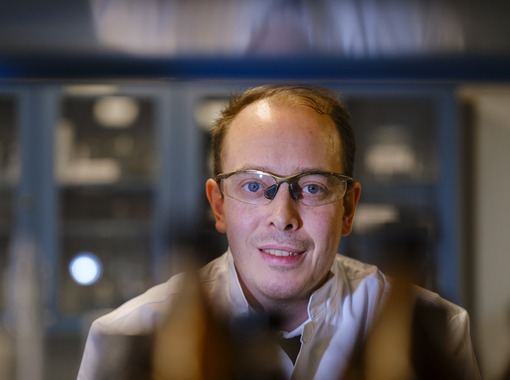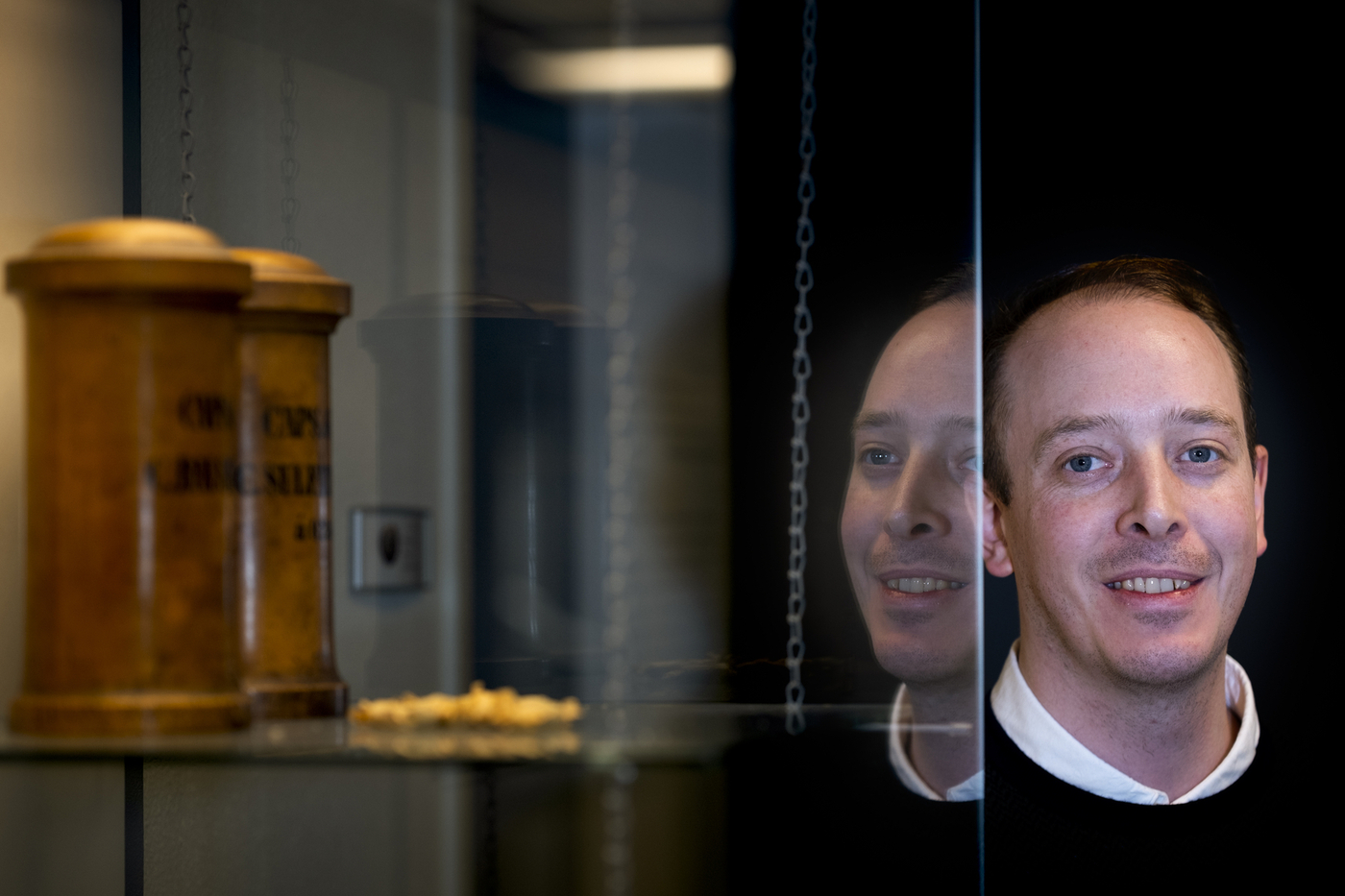University research is about continuously re-evaluating and developing accepted ideas and searching for new knowledge and new solutions to improve lives and benefit society as a whole. In order to fulfil this role, institutions like the University of Iceland need to recruit people with new ideas and new knowledge who can enhance and broaden the scope of research and teaching. This includes former students who have left to pursue further education. When they return, they bring with them knowledge and ideas that strengthen the university and indeed the country. Haraldur Gunnar Guðmundsson, who recently began working at the Faculty of Pharmaceutical Sciences, is an excellent example of such a student. He is now working on an exciting project, aiming to develop new methods for something called isotope labelling, which has to do with the smallest building blocks of drugs: the atoms themselves. Isotope labelling is key to drug development. Haraldur and his colleagues recently published a paper in Nature Synthesis, part of the prestigious Nature Portfolio. The paper presents new methods for isotope labelling in drug research.
Haraldur, an assistant professor at the Faculty of Pharmaceutical Sciences, completed an undergraduate degree in chemistry at UI before commencing his doctoral studies at the University of Oxford. After obtaining his DPhil, Haraldur continued as a postdoctoral researcher in Oxford for additional two years. He then left to work at Aarhus University before returning to Iceland last autumn. "I always intended to come home – it was a question of when, not if," says Haraldur.
"After starting a family in the UK, I quickly realised how important it is to be close to your wider family, but it was the pandemic that really hammered that home. That said, I've always been determined to stay in academia, so of course I was delighted to be offered the position of assistant professor at the Faculty of Pharmaceutical Sciences. This job gives me the opportunities and support I need to pursue my own independent research, for which I am very grateful," he says.
Isotopes are key to researching the effects of drugs
Haraldur's research looks at areas such as organic chemistry, medicinal chemistry and isotope labelling. "My main research interests at the moment are about developing new methods to form compounds that contain isotopes. Isotopes are atoms of the same element that have a different number of neutrons. Consequently, Isotopes t have different atomic masses, without significantly affecting or changing their chemical properties, because the atomic number remains the same, i.e. the number of protons in the nucleus. Chemists and pharmaceutical researchers have exploited this difference in order to investigate the effects of new drug identities, particularly in consideration of unpredictable metabolic pathways that may affect metabolism and breakdown of drugs in the body, in order to determine the safety of the drugs and to further our understanding of the way they work," explains Haraldur.
"There are a huge number of opportunities in isotope labelling, particularly with regard to developing new methods that could be used to synthesise bioactive materials such as fatty acids, amino acids and peptides. Isotope labelling of such materials will make it easier for scientists to research challenging topics such as proteomics and lipidomics, which will greatly expand our understanding of these complex processes in the body. Particularly, this could be used in the development of new drugs," says Haraldur. image/Kristinn Ingvarsson

Isotope labelling has played an important role in all kinds of drug development and indeed is an essential part of the pharmaceutical industry. "However, the pharmaceutical industry uses just a handful of methods to introduce isotopes, mostly limited to isotopes of hydrogen (1H), i.e. deuterium (2H) and tritium (3H). Since organic molecules, including drugs, are essentially made up of carbon atoms (by far the most common isotope of carbon is 12C) bonded to hydrogen atoms, using isotopes of carbon rather than hydrogen offers many advantages. They are more stable when exposed to the body's metabolic processes," says Haraldur, who is attempting to develop new methods that will make it easier to use isotopes of carbon, for example by creating new reactants. Reactants have previously been a barrier to the use of isotopes of carbon in the pharmaceutical industry.
Haraldur also points out that the process of developing a new drug is costly, complex and time consuming. "It is important to make sure that all drugs under investigation, at each stage of the process, are not only safe, along with their metabolites, but also work in the way intended. Isotope labelling is absolutely essential here and any advances that can make synthesis easier and quicker will result in quicker and safer drug development," he adds.
A huge number of opportunities in isotope labelling
The paper published in Nature Synthesis earlier this month discusses this very topic: isotopes of carbon. The research project, on which the paper is based, was conducted by Haraldur during his time at Aarhus University. "The paper is partially based on a previous study that we published in Nature Catalysis in 2020. There, we demonstrated the applicability of our strategy for the synthesis alkylamines, which are found in almost all pharmaceuticals. We also demonstrated how this method could be used to introduce the 13C isotope of carbon, using [13C]carbon monoxide, for the labelling of pharmaceuticals. However, for this application of isotopes to be useful in drug research, the drug needs to contain a minimum of three isotopes. It has proved very challenging to meet this requirement in the case of carbon isotopes labelling, requiring time-consuming and costly de-novo synthesis. The paper we just published in Nature Synthesis presents a solution to this problem. We demonstrate the effectiveness of a new and simple method for introducing more than one isotope of carbon into organic compounds such as drugs. This has not previously been possible," explains Haraldur.
The method can also be easily adapted to introduce isotopes of hydrogen, making it possible to create a drug labelled with up to 6 isotopes, of both carbon and hydrogen. "There are a huge number of opportunities in isotope labelling, particularly with regard to developing new methods that could be used to synthesise bioactive materials such as fatty acids, amino acids and peptides. Isotope labelling of such materials will make it easier for scientists to research challenging topics such as proteomics and lipidomics, which will greatly expand our understanding of these complex processes in the body. Particularly, this could be used in the development of new drugs," concludes Haraldur.




